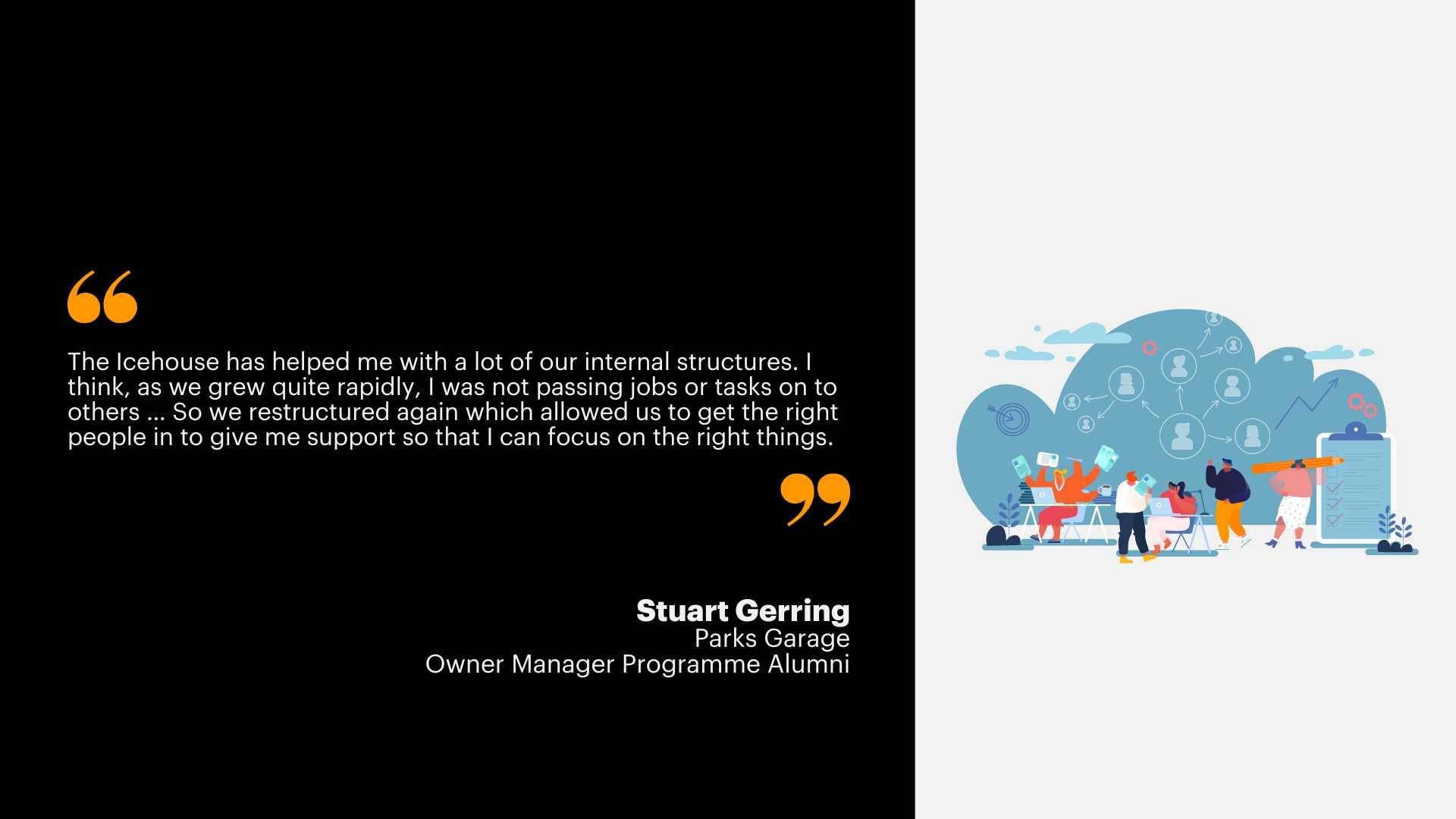
It’s a confronting admission – that gut feeling that you as an owner, are stifling the growth of your business.
“It comes up all the time in our conversations with Kiwi business owners,” says Anthony Gold, a former Customer Growth Partner at The Icehouse. “They’re dedicated, passionate and absolutely have the best interests of the business at heart but, for so many reasons, they know there’s a better way.”

Understandably, business owners are pulled in so many different directions that it’s often easier to get on with it than take time out to make a radical change. If this sounds familiar, and you want to remove yourself as an obstacle to growth, then there is a better way, and it’s often only a few meters away – your leadership or management team.
“Letting go and letting others get on with the job is huge. It sounds simple, but it’s a problem, and invariably issues such as trust and delegation can get in the way, but the first stage of any growth comes from expanding awareness,” says Anthony.
Empowering the team immediately under the owner enables both parties to breathe, helps define responsibilities, roles and functions, accelerates and fosters a training and development culture and, ultimately, provides a catalyst for a shift in thinking.
Removing the roadblock is about developing and empowering your teams, but it has to be powered by a mindset change. It’s often up to the business owner to take the first step, to work to transition the leadership team to manage.
“Your leadership team is more than your support system – after all, they’re the ones who are best placed to make key decisions. They have skills in abundance – that’s why they were employed in the first place.”
There are practical measures owners can take. Some owners physically distance themselves – moving upstairs or working remotely more frequently to encourage the team to problem-solve more proactively. And that works wonders for some businesses. But real change comes from a change of thinking.
Owners must never forget that they’re not experts on everything. They’re not supposed to be, and they don’t need to be. They’re founders who provide the vision and define the overarching direction of the business. In short, it’s okay to let other professionals within the business be the experts.
When the button is pushed, what happens next is a symbiosis where one leans and learns into the other and where freedom breeds freedom, responsibility and development.
It’s a philosophy adopted and a hurdle cleared by so many of our Owner Manager Programme (OMP) alumni. As Ray Tomlinson, the owner of JT Group and founder of Summit, explains: “Get the right people around you, set the expectations and the goals of what you want done.
“Then probably the biggest thing for a lot of businesses is, if you bring them on board, allow them to use their skills. They will learn along the way as well, but do not micro-manage. There are a lot of businesses that I see that do not grow, because the owner knows it all – it's got to be done their way.
“When I look at the business after completing OMP, I now step back and let the team do it. Now… they know more than me. You have got to allow that if you want to grow a business – get the right people on board, and then give them the opportunity to show what they can do.”
Training and development can create the pathways to clear thinking and practical advice that many owners crave – and putting the right people in the correct positions.
“The Icehouse has helped me with a lot of our internal structures. I think, as we grew quite rapidly, I was not passing jobs or tasks on to others, and had people that were from the trade or from the industry coming off the tools to do a step up, but they were not really the perfect fit either… So we restructured again which allowed us to get the right people in to give me support so that I can focus on the right things,” says Stuart Gerring from Parks Garage and another OMP alumni.
Shane Smith, from Palmers Bethlehem, followed a similar path and it was one of his big takeaways from OMP: “…hiring someone that can take a lot of the work jobs off me, which lets me do some of the things that I want to do. The biggest thing for me would be setting up a long-term goal and working on achieving it every day.”
A well-designed management structure encourages greater coordination and communication within the organisation from top to bottom, which improves productivity and teamwork.
It reduces ambiguity and fosters accountability. Finally, it promotes effective decision-making and problem-solving, ensuring smoother operations and sustainable growth, and that’s a win for any owner.
For information on programmes, workshops and business coaching services from The Icehouse, click here.
For more business ownership and leadership advice, check out more of our resources.
Icehouse Alumni? For exclusive content on Icehouse Central, register now.


